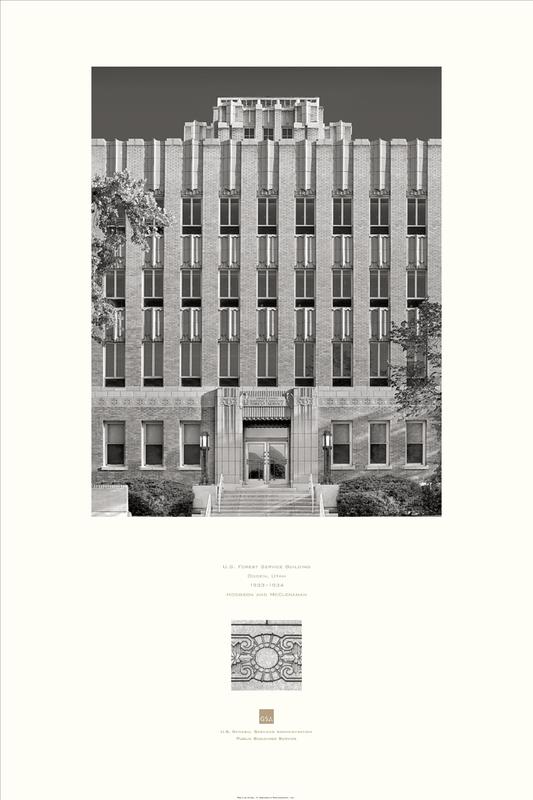The Ogden U.S. Forest Service Building

General Service Administration. "U.S. Forest Service Building, Ogden, UT." https://www.gsa.gov/historic-buildings/u-s-forest-service-building-ogden-ut#architecturaldesc
The US Forest Service Building is one of the most significant Art Deco structures in Utah and a fine example of federal work projects initiated during the Great Depression of the 1930s.
Built in 1933, the Ogden U.S. Forest Service building was designed by the well-renowned architectural firm Hodgson and McClenahan. The two architects were known for their attention to detail and, in this particular build, their stylized brick layout. The firm designed other well-known examples of Art Deco such as Ogden High School in 1936 and the Ogden Weber Municipal Building in 1939.
It was numbered among the initial projects funded by congressional appropriations in the early years of the depression, prior to the formal organization of federal relief programs during the Great Depression. Locally, the building is significant in Ogden's development as a Federal government colony. The U.S. Forest Service was the first federal agency to locate in a city where the Federal government is currently the largest employer.
In 1908, the U.S. Forest Service established District 4 regional headquarters at Ogden, Utah, then the state's second largest city and important railroad regional center. Ogden was selected over Salt Lake City because of three main factors: 1) more favorable railroad rates, 2) available facilities, and 3) greater aggressiveness of Ogden's business community. The building which housed these offices was built by local businessman Fred J. Kiesel at 24th St. and Lincoln. The Kiesal home became the site for the new building.
On December 20, 1932, a contract for $229,000 was let to the Murch Brothers Construction Company of St. Louis, and work commenced in January 1933. Local labor was to be employed "when available." Lumber, brick, and cement was supplied by local businesses. Granite blocks were imported from the Raymond Granite Quarries of California.
The U.S. Forest Service Building was originally built to provide offices for the U.S. Forest Service Intermountain Region, the experimental station, and the supply depot. The building, as described in a contemporary account, occupies a ground space of 11,300 square feet consisting of a basement, four floors, and a three story tower. The first story was decorated with Utah marble and described as Golden Travertine. The floors were of birch with a walnut finish.
Since its construction, only minimal alterations have been made to the building. Original storage areas were renovated into offices between 1939 and 1940. In 1963, the roofing was replaced and the skylights removed. This has left a very high level of architectural integrity.
The U.S. Forest Service Building was first listed in the National Register of Historic Places in 1983 as part of the Ogden Art Deco Buildings Thematic Resources Nomination, which recognizes the town's significant Art Deco architecture. In 2006, the building was individually listed in the National Register as an architectural gem, exemplifying the Art Deco Style of the 1930s. The building is now being vacated by the Forest Service.
Images

General Service Administration. "U.S. Forest Service Building, Ogden, UT." https://www.gsa.gov/historic-buildings/u-s-forest-service-building-ogden-ut#architecturaldesc

